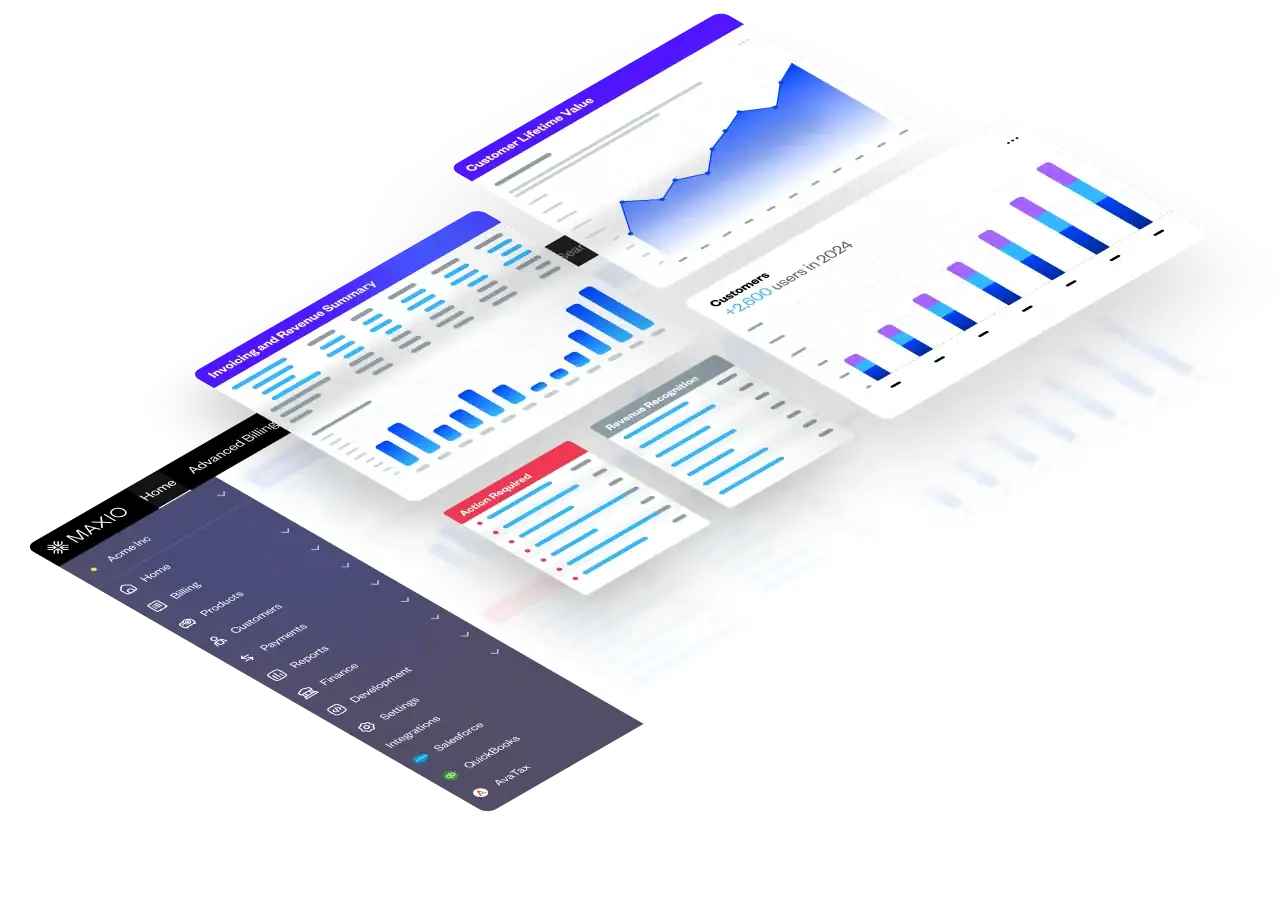Q2 2023
Benchmarking Growth Rates for B2B SaaS
The Maxio Growth Index analyzes anonymized year-over-year customer billing data from the Maxio financial operations platform, which currently processes over $13B in billing and invoicing data annually. Maxio has over 2,000 customers, most of which are VC- or PE-backed software-as-a-service (SaaS) companies with revenue between $1M and $100M.
The Maxio Growth Index report reveals that B2B software companies appear remarkably resilient in the face of current economic headwinds. Of the companies analyzed in this study that process $1M or more in annual billings, 82% grew year-over-year from 2021 to 2022.
However, growth rates for most companies declined over the course of 2022, with a substantial drop-off in December. This trend can be attributed to ongoing macroeconomic uncertainty and cooling technology markets, compounded with increased customer churn around end-of-year renewal dates.
Pricing models impact growth rate
Different pricing models appear to have had an outsized impact on the growth rate of SaaS companies in 2022. Maxio customers with a consumption (aka usage) model often used by product-led growth (PLG) companies saw a more pronounced growth-rate slowdown, with a 9.2% average decline between 2021 and 2022.
By comparison, customers who use subscription invoicing, which often has a more traditional high-touch sales-negotiated motion, only saw a 0.5% average decline over the same period.
One of the benefits of usage-based pricing for SaaS companies is that when a customer grows and uses the software more, the SaaS company receives an immediate uptick in its monthly billings. However, when customer growth slows or reverses, companies leveraging usage-based pricing can be exposed to a contraction in their recurring billings, sometimes unexpectedly.
On the other hand, companies offering traditional, subscription-based pricing models see the inverse trend, enjoying stability and predictability in billings but limited upside if customers grow or expand usage before the contract expiration.
Contract length impacts churn
This delta between the two types of pricing models is also influenced by the terms of the vendor agreements, according to Jon Cochrane, director of the Maxio Institute, the research arm of Maxio that produced the Growth Index. “The stark difference in growth rates for these cohorts ties back directly to different agreement types,” Jon explained. “Companies with consumption-based pricing models tend to offer month-to-month agreements, whereas subscription-invoicing companies tend to have longer-term agreements of a year or more, with predictable billing schedules.”
Jon continued, “As the year progresses, we will likely see additional churn in companies with sales-negotiated contracts as their customers come up for renewal. We expect this to normalize the discrepancy we’re seeing in growth rates between the consumption and subscription-driven companies using our platform today.”
Additional key findings
Additional key findings from the Q1 2023 Growth Index report include:
- Mid-market self-service companies—those who process $10-20MM annually—saw the most significant drop in growth between Q1 and Q4 at a 39% decline. By comparison, this same cohort for contract-driven companies saw a decline of just 3.6%.
- Once businesses exceed $1M in revenue, it appears they become more resilient in the face of economic headwinds. Specifically, according to the analysis, ~82% of businesses above $1MM experienced YoY growth vs. only 67% when you include the <$1MM cohort.
- The earliest stage businesses (those with annualized billings or revenue <$1MM) struggle disproportionately to those >$1MM.
Methodology
The Maxio Growth Index analyzes the anonymized billing data of over 2,000 Maxio customers from December 2021 to December 2022. The Index is segmented into eight cohorts based on customer billing volume, between <$1M to $100M+ in annual billing revenue. The Maxio Institute used the following criteria in its analyses:
- Cohorts for consumption billing companies were determined using trailing-twelve-month (TTM) billings on 12/31/22.
- Cohorts for subscription invoicing companies were determined using TTM revenue on 12/31/222.
- Companies needed their TTM billings or TTM revenue to be greater than $0 at the beginning and end of a period to be included.
- Outliers who had fluctuations greater than 500% or less than -500% during this time period were excluded.

